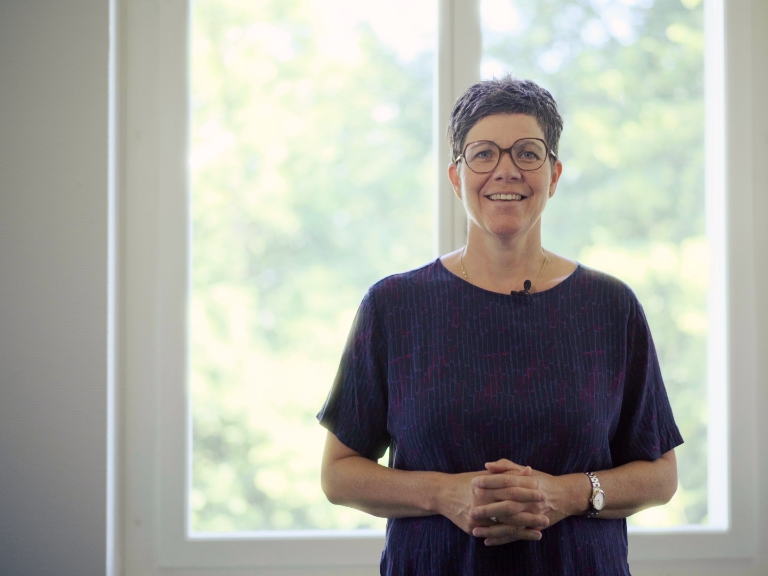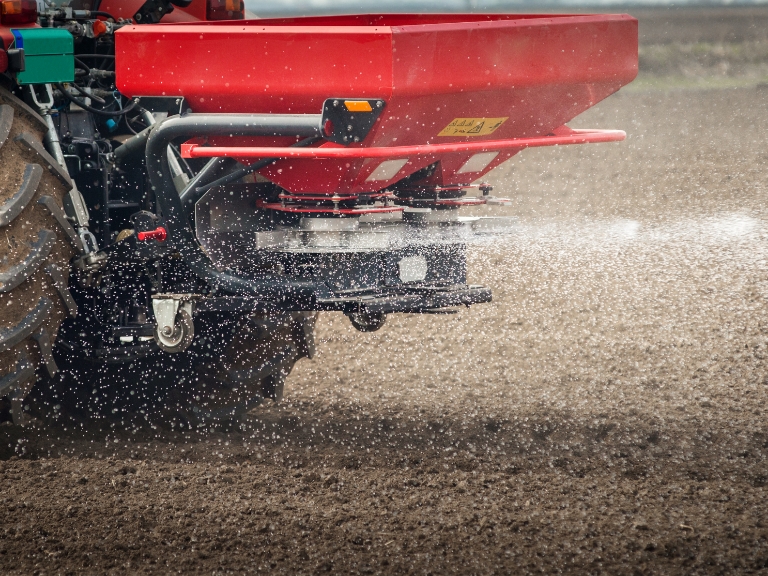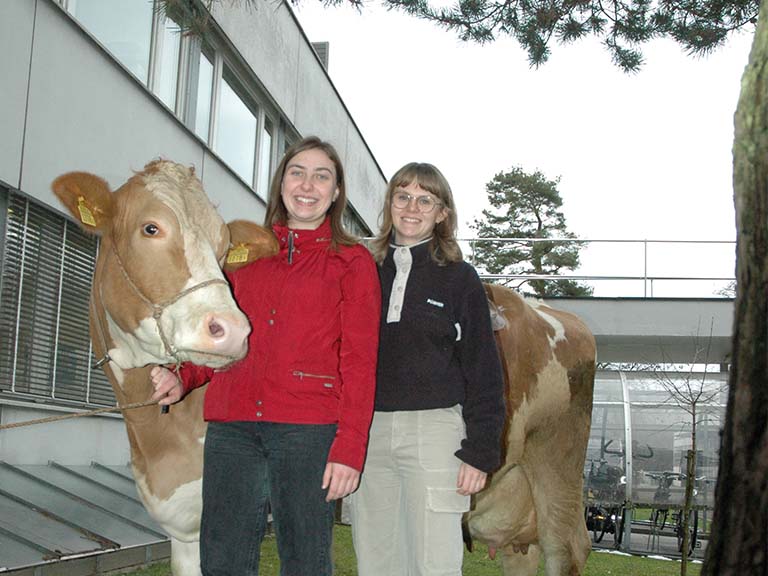Climate Roadmap 2030
Climate protection with Emmental biogas
The Uni Bern is working to reduce its greenhouse gas emissions. A contribution is being made to climate protection for emissions that are difficult to avoid. One example of this is the biogas plant on the Schürch family farm in Kirchberg.

At first glance, there is little to suggest a biogas plant: no large spherical or cylindrical storage tanks, no gas flare. Instead, there is a barn, hay bales and cows enjoying the spring in the pasture. But here in Kirchberg near Burgdorf, energy is produced from cow dung - and the University of Bern is using this for its climate strategy. On March 17, a delegation from the responsible Vice-Rectorate Quality and Sustainable Development visited the Schürch family farm.
Climate protection through waste
Organic waste such as liquid manure, food waste or agricultural residues release methane during natural decomposition - a greenhouse gas that is around 25 times more harmful to the climate than CO₂. In a biogas plant, this methane is captured in a closed system and used to generate energy instead of escaping into the atmosphere. Certificates can be sold for the amount of emissions avoided in this way. This is exactly what the Schürch family does on their farm in Kirchberg. With the help of Ökostrom Schweiz, the agricultural trade association for biogas in Switzerland, they sell these certificates - to the University of Bern.

The Schürch family runs a dairy farm with 35 cows and a small rearing unit on their organic farm. The biogas plant was added in 2016. The fermenter, where the fermentation process takes place, is underground. Only the pressure relief valve indicates this above ground.
In addition to the heat used to heat the farm's residential buildings, the plant uses a combined heat and power plant to produce enough electricity from the biogas to power around 13 standard households each year.
The fermentation residue is also used as farmyard manure. This is odourless and avoids additional greenhouse gas emissions caused by synthetic fertilizer production. On the other hand, it can also be applied in a more targeted manner than liquid manure – which avoids environmental pollution.
Subscribe to the uniAKTUELL newsletter

Discover stories about the research at the University of Bern and the people behind it.
Commitment out of conviction
Beat Schürch spends about an hour a day operating the biogas plant. He compares filling the plant, meaning feeding the microorganisms required for the fermentation process, with feeding his cows. Both are part of his normal working day.
“The plant not only benefits people, but also the environment.”
Beat Schürch
The fermentation is a slow process, and in addition to regular "feeding", a constant temperature is also important. In summer, when the animals are on the alp, there is little farmyard manure available for the system. During this time, the system produces less electricity and heat. Schürch then also needs another use for the heat. One possibility being to dry fire wood.
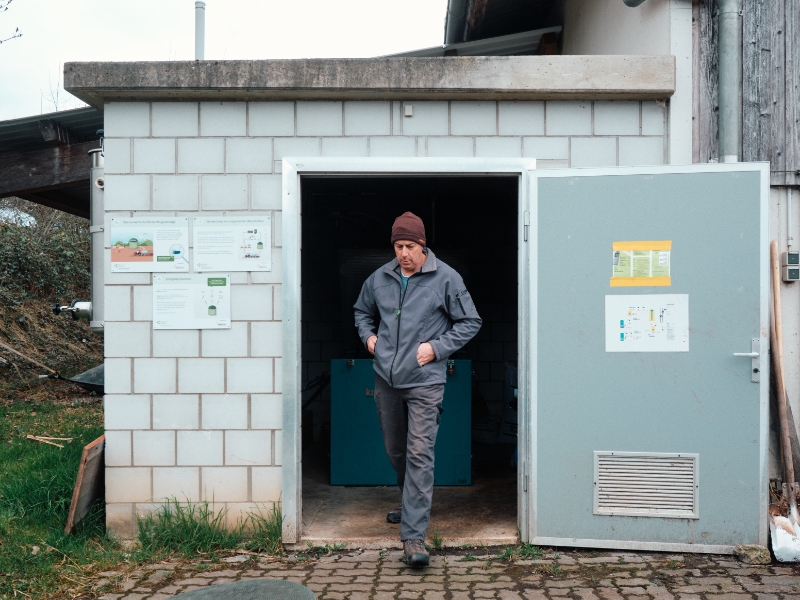
Although the savings on heating costs and the feed-in tariff for the electricity generated are also good for the wallet, the amount is so small that the effort would not be worth it. “We do this out of conviction. It's a good thing because the nutrients are retained in the manure for the fertilizer and we avoid harmful methane emissions at the same time. This benefits not only people, but also the environment."
University makes climate protection contribution in the region

Biogas plants are relatively expensive for electricity and heat production. Small biogas plants in particular, such as the one on the Schürch family's organic farm, are therefore dependent on financial support from climate protection projects. Added to this are the administrative challenges involved in planning such projects, partly due to the requirements of monument protection. This is also the reason why this biogas plant was built underground.
“We can also make a difference with small plants.”
Benjamin Jungblut
But also for Benjamin Jungblut from Ökostrom Schweiz, the advantages outweigh the disadvantages: "Despite the comparatively small size of such plants, we can do something to protect the climate and the environment." For example, a farm the size of the Schürch family’s could save around 70 tons of CO2 per year with a biogas plant, which is equivalent to around 35 Transatlantic flights.
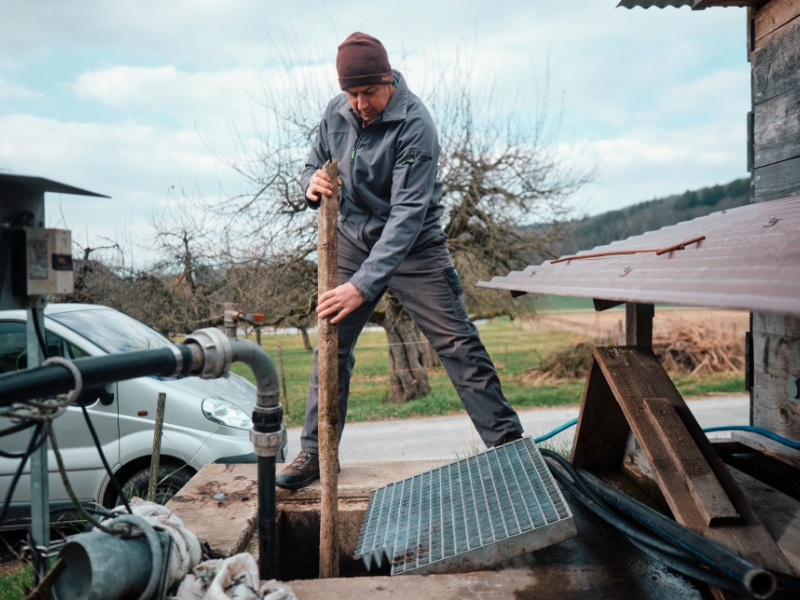
“This project also impressed us with the opportunity to make a positive contribution to climate protection in the Bern region. ”
Heike Mayer
As Heike Mayer, Vice-Rector for Quality and Sustainable Development, explains, numerous measures are being taken to reduce emissions as part of the University of Bern's climate strategy. However, air travel cannot be completely avoided for research and teaching at an internationally active university. For this reason, other ways of climate protection are being sought. "The Swiss biogas plants project was convincing, not least because of the opportunity to make a positive contribution to climate protection in the Bern region," says Mayer.
University of Bern climate strategy
The University of Bern is currently developing a Climate Roadmap 2030 as part of a participatory process. In addition to reducing the university's greenhouse gas emissions, the focus is on alternative ways of engaging in climate protection and making positive contributions to environmental protection.
